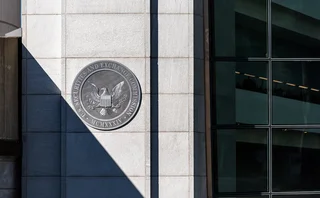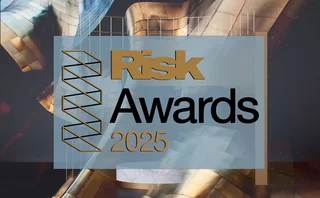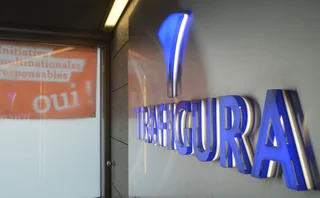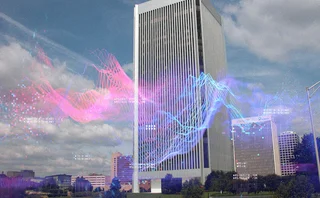
Full circle

It seems we've come full circle. In October 2007, just as the credit crisis was starting to look really nasty, Bank of America, Citigroup and JP Morgan unveiled a plan to launch the master liquidity enhancement conduit (MLEC). The vehicle was intended to buy highly rated assets from structured investment vehicles (SIVs) struggling to refinance in the asset-backed commercial paper market - and by doing so, avoid the need for SIVs to sell assets at fire-sale prices and restore some level of confidence to the sector.
A year later, the US government proposed its Troubled Assets Relief Program (Tarp). This $700 billion fund was designed to buy up mortgage assets from the balance sheets of troubled financial institutions - aiming to draw a line beneath banks' losses. Both got little further than the discussion phase. MLEC saw little take-up by banks and was quietly ditched, while Tarp instead used its funds to recapitalise the US banking sector. The failures were partly due to a lack of consensus on how the assets would be valued. Banks were reluctant for the assets to be valued at market prices (in the rare occasions market prices were available), noting distressed conditions and a lack of liquidity had pushed prices for these assets far below their intrinsic value. Others tore into suggestions prices be based more on a theoretical value, arguing the vehicle risked paying over the odds for what might turn out to be worthless assets.
However, economic conditions are deteriorating and the threat of further losses looms. Governments around the globe have poured billions of dollars into their banks, but the problems have continued to get worse. It's difficult to know what would have happened without the capital injections - it seems safe to assume Lehman would not have been the only institution to collapse in September and October. But this crisis will not go away until problem assets are moved off balance sheet - or, in the case of some recent proposals, banks are insured against losses above a certain threshold.
Transferring toxic assets into a 'bad bank' will generate some certainty around valuations, create transparency, and hopefully improve confidence. Valuing the assets will not be easy, but various methodologies have been touted - see Charles Smithson's Class notes article in Risk November 2008, for example.1 Recent initiatives by UBS and ING have shown it is possible to offload assets, providing all parties are realistic and banks aren't afraid to realise further losses if necessary. If the problem assets aren't sorted out, it seems likely this crisis will just run on and on.
Nick Sawyer, Editor
1. www.risk.net/public/showPage.html?page=823938.
Only users who have a paid subscription or are part of a corporate subscription are able to print or copy content.
To access these options, along with all other subscription benefits, please contact info@risk.net or view our subscription options here: http://subscriptions.risk.net/subscribe
You are currently unable to print this content. Please contact info@risk.net to find out more.
You are currently unable to copy this content. Please contact info@risk.net to find out more.
Copyright Infopro Digital Limited. All rights reserved.
As outlined in our terms and conditions, https://www.infopro-digital.com/terms-and-conditions/subscriptions/ (point 2.4), printing is limited to a single copy.
If you would like to purchase additional rights please email info@risk.net
Copyright Infopro Digital Limited. All rights reserved.
You may share this content using our article tools. As outlined in our terms and conditions, https://www.infopro-digital.com/terms-and-conditions/subscriptions/ (clause 2.4), an Authorised User may only make one copy of the materials for their own personal use. You must also comply with the restrictions in clause 2.5.
If you would like to purchase additional rights please email info@risk.net
More on Risk management
SEC leadership change puts Treasuries mandate under scrutiny
FICC clearing models approved, but critics think delay could revive prospects of done-away trading
Markets Technology Awards 2025: Untangling the knots
Vendors jockeying for position in this year’s MTAs, as banks and regulators take aim at counterparty blind spots
Risk Awards 2025: The winners
UBS claims top derivatives prize, lifetime award for Don Wilson, JP Morgan wins rates and credit
An AI-first approach to model risk management
Firms must define their AI risk appetite before trying to manage or model it, says Christophe Rougeaux
BofA sets its sights on US synthetic risk transfer market
New trading initiative has already notched at least three transactions
Op risk data: At Trafigura, a $1 billion miss in Mongolia
Also: Insurance cartels, Santander settlement and TSB’s “woeful” customer treatment. Data by ORX News
Cyber risk can be modelled like credit risk, says Richmond Fed
US supervisors may begin to use historical datasets to assess risk at banks and system-wide
The changing shape of risk
S&P Global Market Intelligence’s head of credit and risk solutions reveals how firms are adjusting their strategies and capabilities to embrace a more holistic view of risk







